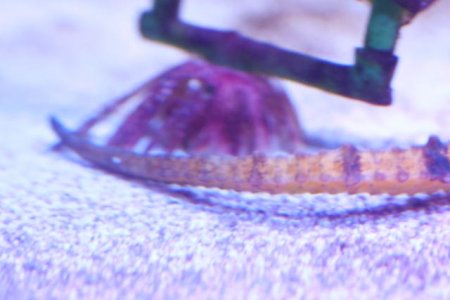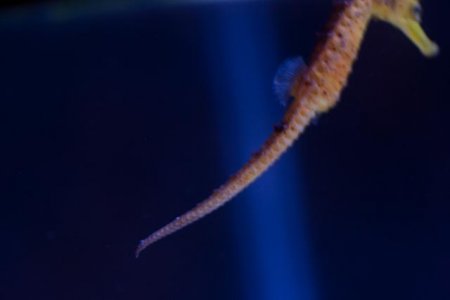We have 4 seahorses that we've had for about 3 months now. They've been doing great. Eating frozen mysis. We recently picked up one an additional male from LiveAquaria. Unfortunately it died after about 10 days. Eating fine, just never seemed to move around much. The day it died it's tail appeared to be turning black.
Today our orange one seems to not be interested in food, and is kind of laying at the bottom of the tank. Still has it's tail wrapped around an anchor, but seems like the tail is turning dark/black? This is highly unusual for her as she usually swims up to your hand when it's time to feed.
Is there a known sickness that turns their tail black before death? Anything specific I can do to try to prevent another casualty?
Today our orange one seems to not be interested in food, and is kind of laying at the bottom of the tank. Still has it's tail wrapped around an anchor, but seems like the tail is turning dark/black? This is highly unusual for her as she usually swims up to your hand when it's time to feed.
Is there a known sickness that turns their tail black before death? Anything specific I can do to try to prevent another casualty?


